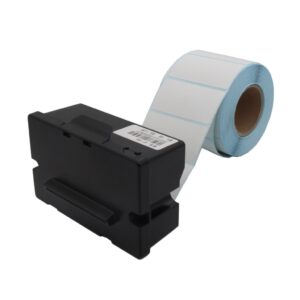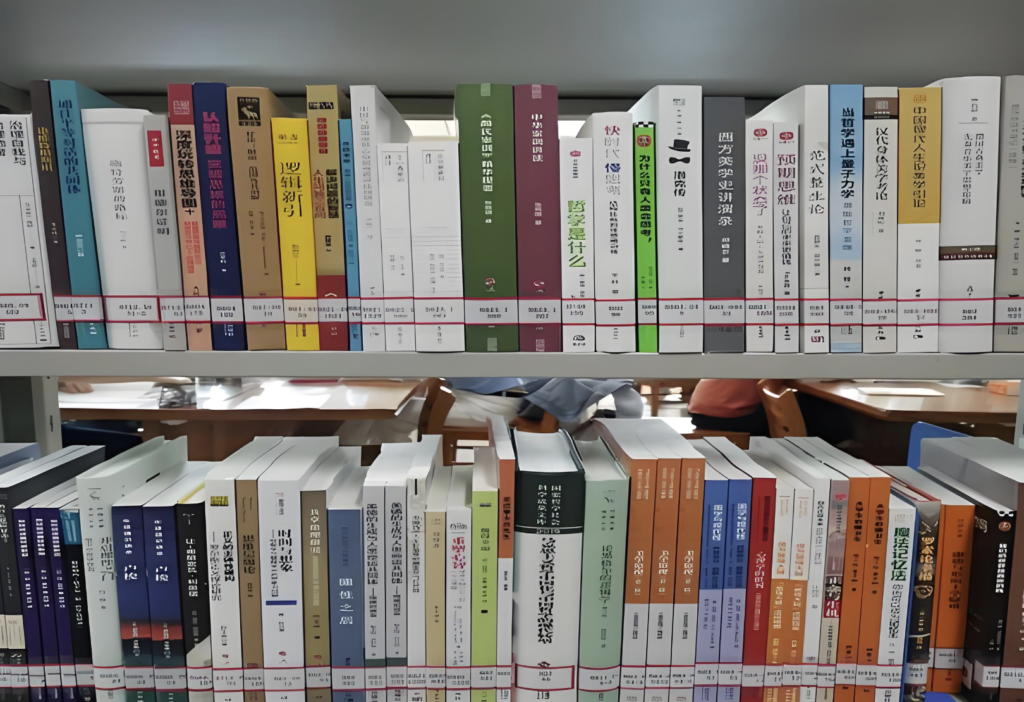Printing Spine Labels: A Comprehensive Guide
1. Introduction to Spine Labels
What Are Spine Labels?
Spine labels are small adhesive stickers affixed to the spines of books, serving as a vital tool for identification and organization, especially in libraries. These labels typically display the call number—a combination of classification number, book sequence number, and details like edition or volume. In library settings, spine labels streamline the process of locating books on shelves, significantly boosting operational efficiency. For personal collections, they offer a simple way to keep books in order, making it easier to find a specific title amidst a growing stack.
Why Spine Labels Matter
The importance of spine labels cannot be overstated. In libraries, they support the Dewey Decimal or Library of Congress classification systems, ensuring books are shelved correctly and retrievable in seconds. For home or office use, they transform chaotic bookshelves into organized systems, saving time and reducing frustration. As Eden Printer emphasizes, efficient labeling is the backbone of any well-maintained collection. This guide dives deep into the essentials of printing spine labels, offering insights into materials, design, technology, and practical steps to get it right.
What You’ll Learn in This Guide
In this comprehensive article, we’ll cover everything you need to know about printing spine labels. From selecting durable materials to mastering design for readability, choosing the best label printers, and following a step-by-step printing process, we’ve got you covered. We’ll also address common questions and pitfalls, ensuring you’re equipped to create professional-quality labels. Whether you’re a librarian or a book enthusiast, this guide, brought to you by experts at Eden Printer, will elevate your labeling game.
2. Materials and Design for Durable Spine Labels
Choosing the Right Materials
Selecting the appropriate materials is the foundation of durable spine labels. Experts recommend acid-free, archival-safe paper paired with a permanent acrylic adhesive. Acid-free paper resists yellowing and degradation, ensuring your labels remain legible for decades. The adhesive, meanwhile, secures the label without harming the book’s spine—a critical factor for long-term use. According to Jane Doe, a library technology specialist, “The right material choice can extend a label’s life by years, preserving both the book and its accessibility.” Explore thermal label printing options for more insights on material compatibility.
Design Tips for Readability and Consistency
Design plays a pivotal role in making spine labels functional. Opt for clear, sans-serif fonts like Arial or Helvetica, ensuring text is legible from a distance yet fits within the label’s confines. Alignment—whether centered or left—justified—should align with your organizational standards. Standard sizes like 1″ x 1.5″ or 2″ x 1″ suit most books, while color coding (e.g., white for general use, colors for genres) enhances visual sorting. Consistency in design fosters a professional look, critical for libraries and personal collections alike. Check out sticker printer guides for design inspiration.
Common Questions Answered
What is the standard size for spine labels? The most widely accepted sizes are 1″ x 1.5″ and 2″ x 1″, though adjustments can be made based on book thickness and information density. What material is best for durable spine labels? Acid-free, archival-safe paper with permanent acrylic adhesive tops the list, offering durability and preservation. For premium printing solutions, consider Eden’s Bluetooth label printers.
3. Printing Technologies: Choosing the Right Method
Overview of Printing Options
Choosing the right printing technology is essential for high-quality spine labels. The main contenders are inkjet, laser, and thermal printers, each offering unique benefits. Your choice depends on volume, budget, and label requirements. Thermal vs. inkjet comparisons can help you decide.
Inkjet Printers
Inkjet printers excel for small batches, delivering vibrant color quality—perfect for color-coded labels. However, ink can smudge if not fully dried, and costs rise with frequent ink refills. They’re ideal for home use with mobile printers.
Laser Printers
Laser printers produce sharp, smudge-free text, making them cost-effective for black-and-white labels in larger volumes. They’re faster than inkjets but less adept at color, and toner can be pricey. See POS printers for versatile options.
Thermal Printers
Thermal printers, favored by libraries, offer speed and efficiency without ink, using special thermal paper. They’re limited to black-and-white but excel in high-volume settings. Explore kiosk thermal printers for library-grade solutions.
Comparison Table
| Technology | Advantages | Disadvantages |
|---|---|---|
| Inkjet | Great color, small batches | Smudging, higher cost |
| Laser | Sharp text, cost-effective B&W | Limited color, toner cost |
| Thermal | Fast, no ink | Black-only, special paper |
Common Question Answered
Are there special printers for spine labels? While standard inkjet and laser printers suffice for small-scale use, thermal printers like those from Eden Printer are preferred for their speed and volume capacity in libraries.
4. Printing Spine Labels: A Step-by-Step Guide
Step 1: Select Your Label Paper
Start by choosing printer-compatible label paper—inkjet or laser with adhesive backing, or thermal paper for thermal printers. Quality paper ensures durability and print clarity. Label printing guides offer more tips.
Step 2: Design Your Labels
Use software like Microsoft Word or templates from Eden’s sticker printer resources. Include call numbers, align text clearly, and test readability. Precision here prevents reprints.
Step 3: Load and Print
Load label paper per your printer’s instructions to avoid jams. Print a test on plain paper first, then proceed to labels once alignment is perfect. Thermal receipt printers simplify this step.
Step 4: Apply the Labels
Peel and place labels 2 cm from the book’s spine bottom, pressing firmly for a secure bond. Consistency enhances shelf aesthetics and usability.
Common Questions Answered
How do I print spine labels at home? Follow these steps with a home printer like Eden’s mobile Bluetooth printer for pro results. How do I apply spine labels to books? Position them 2 cm from the bottom for optimal readability.

High-quality label printer for spine labels

Efficient kiosk printer for library use
8. Tools and Software for Spine Label Printing
Popular Software Options
Choosing the right software simplifies spine label creation. Programs like Label Matrix and SpineOMatic are favorites among librarians for their ease of use and compatibility with library systems. These tools allow you to input call numbers, adjust layouts, and print in batches. For more advanced needs, Eden’s sticker printer guide offers insights into integrating software with hardware.
Printer Compatibility
Ensure your printer aligns with your software and label stock. Thermal printers, like those from Eden Printer, are ideal for crisp, durable labels. Check specifications for paper width and print resolution to avoid jams or blurry output. Compatibility saves time and reduces frustration.
Templates and Design Tips
Using pre-made templates speeds up the process. Many software options include customizable templates for standard label sizes (e.g., 1” x 1.5”). Keep designs simple—use bold fonts like Arial or Times New Roman, and avoid clutter. Test prints ensure everything fits perfectly before mass production.
Common Questions Answered
What software is best for beginners? SpineOMatic is user-friendly and widely supported. Can I use my home printer? Yes, but for high-volume needs, consider a dedicated label printer from Eden’s high-speed options.
Conclusion: Mastering Spine Label Printing
Spine label printing is a small but critical task for organizing books, whether in a library, office, or personal collection. From selecting the right materials to avoiding common pitfalls like misalignment or poor font choices, attention to detail pays off. Maintaining labels with protectors and embracing trends like QR codes or eco-friendly materials keeps your system modern and efficient. With the right tools—software like SpineOMatic, printers from Eden Printer, and a bit of know-how—you can create labels that are both functional and durable.
The print label industry continues to evolve, driven by demand from over 10,000 U.S. libraries and countless private collections. By following the tips in this guide, you’ll streamline your process and enhance organization. Ready to get started? Explore Eden’s label printer range for reliable solutions tailored to your needs.
Additional Resources
- Library of Congress Classification Guide – Learn more about call number systems.
- ALA Library Fact Sheet – Statistics on U.S. libraries and their needs.
- Printing Industry Resources – Trends and innovations in label printing.
These resources provide deeper insights into classification, library stats, and printing advancements to complement your spine label efforts.


